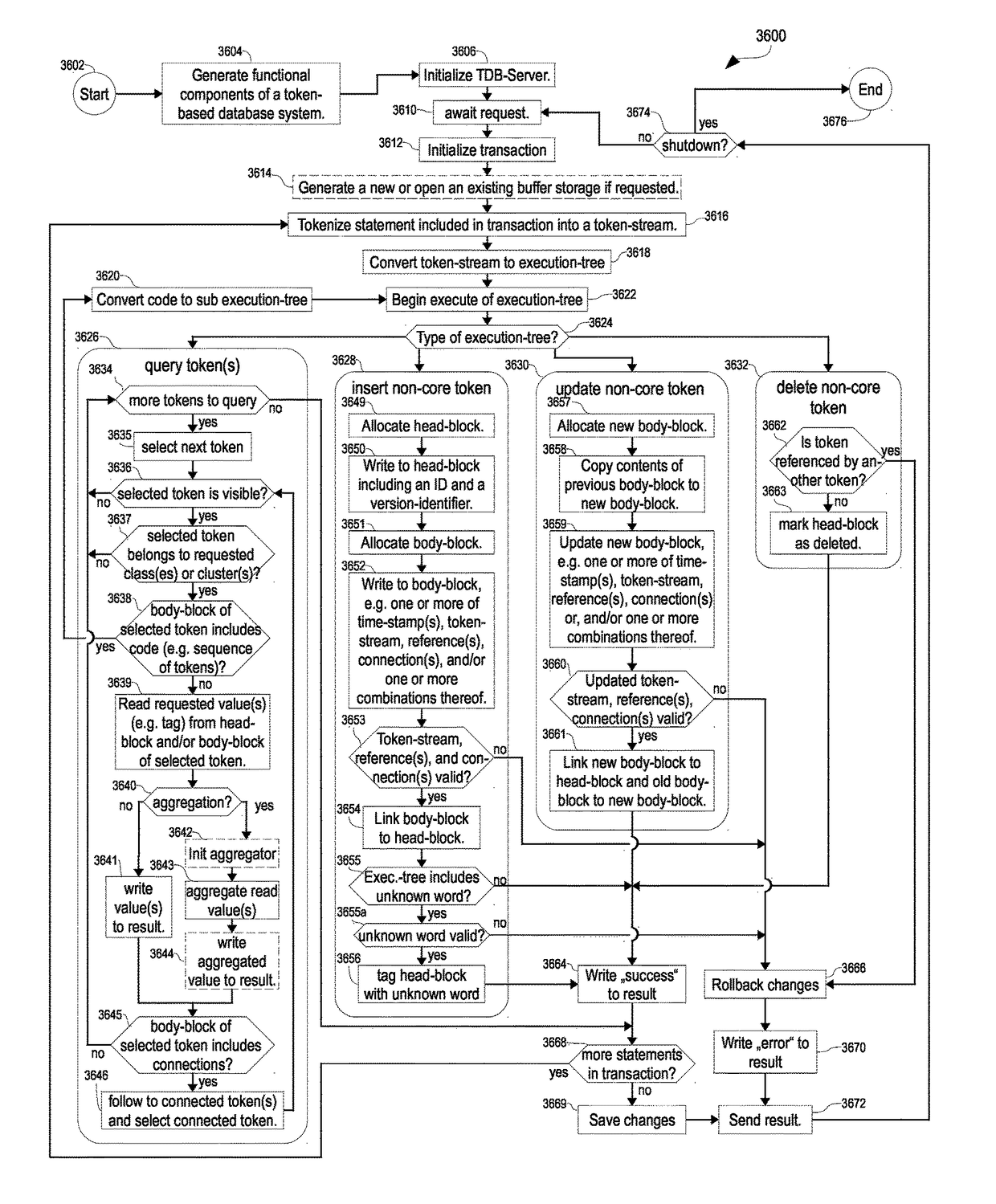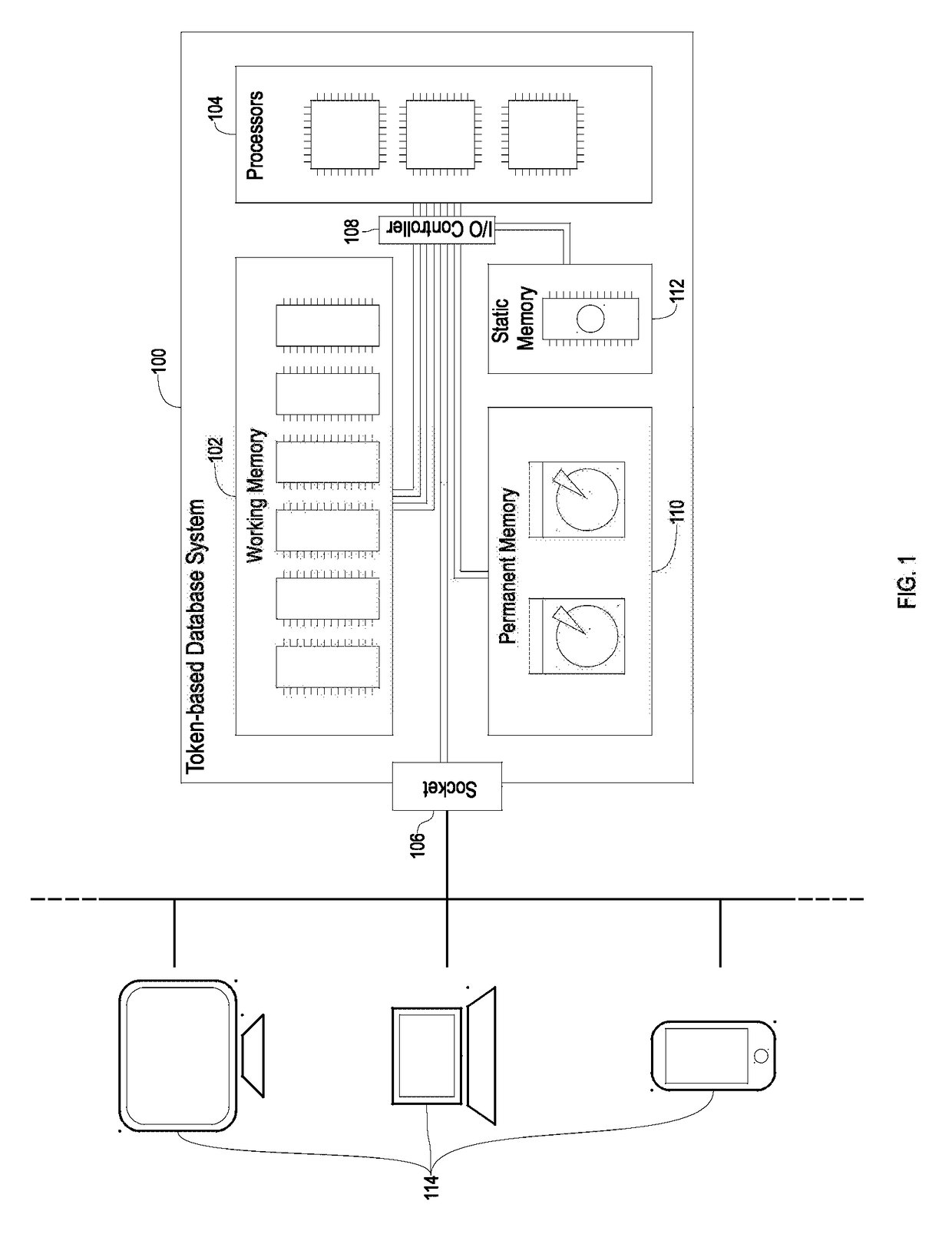Token-based database system and method of interfacing with the token-based database system
a database system and token database technology, applied in the field of token database system, can solve the problems of inability to code included in the database cannot be used to model encapsulated data objects, and the database management system cannot automatically track changes made to the data, so as to ensure the consistency of the information stored in the token database, the effect of simplifying situations
- Summary
- Abstract
- Description
- Claims
- Application Information
AI Technical Summary
Benefits of technology
Problems solved by technology
Method used
Image
Examples
Embodiment Construction
[0147]A token-based database system and a method of interfacing with the token-based database system are disclosed herein. In the following description, for the purposes of explanation, numerous specific details are set forth in order to provide a thorough understanding of example embodiments or aspects. It will be evident, however, to one skilled in the art, that an example embodiment may be practiced without all of the disclosed specific details.
[0148]FIG. 1 illustrates a block diagram of hardware components of an example token-based database system 100. More specifically, the system 100 includes a working memory 102 (e.g., random-access-memory (RAM)), one or more processors 104, a socket 106, an input / output (I / O) controller 108, a permanent memory 110 (e.g., one or more hard-disks), and a static memory 112 (e.g., read-only memory (ROM)).
[0149]The I / O controller 108 organizes the flow of instructions and data amongst the one or more processors 104, the memory components 102, 110,...
PUM
 Login to View More
Login to View More Abstract
Description
Claims
Application Information
 Login to View More
Login to View More - R&D
- Intellectual Property
- Life Sciences
- Materials
- Tech Scout
- Unparalleled Data Quality
- Higher Quality Content
- 60% Fewer Hallucinations
Browse by: Latest US Patents, China's latest patents, Technical Efficacy Thesaurus, Application Domain, Technology Topic, Popular Technical Reports.
© 2025 PatSnap. All rights reserved.Legal|Privacy policy|Modern Slavery Act Transparency Statement|Sitemap|About US| Contact US: help@patsnap.com



